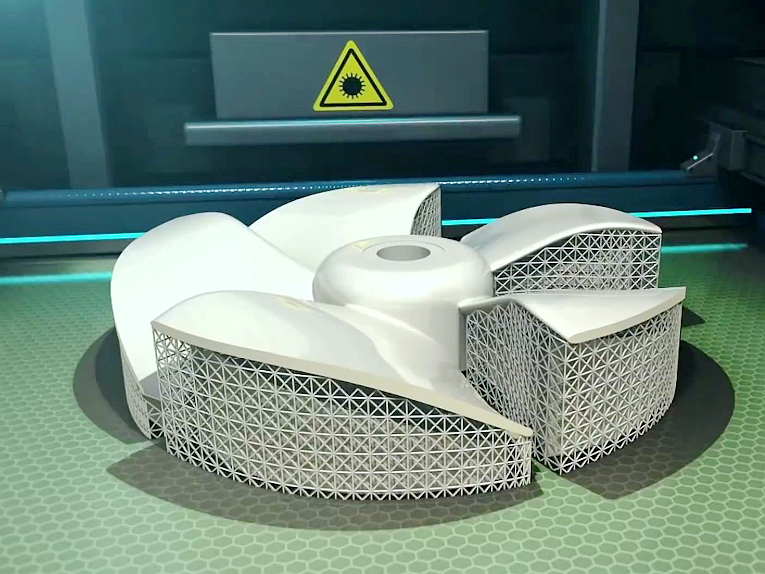What Is Stereolithography (SLA) 3D Printing?
Introduction
Stereolithography (SLA) is a high-precision additive manufacturing technique that utilizes photopolymerization to create highly detailed and dimensionally accurate parts. Unlike Fused Deposition Modeling (FDM), which builds objects by extruding thermoplastic filament, SLA forms solid objects by selectively curing liquid resin using an ultraviolet (UV) laser or light source. This method allows for fine details and smooth surface finishes, making it popular in the automotive, aerospace, healthcare, and high-end consumer goods manufacturing industries.
SLA is widely recognized for its ability to produce highly accurate prototypes and functional parts with minimal post-processing compared to other 3D printing technologies. This capability makes it an essential tool for designers, engineers, and manufacturers looking for precision and repeatability in product development.
Historical Development
Invented in 1986 by Chuck Hull, SLA was the first patented additive manufacturing technology. The company 3D Systems pioneered its commercialization, paving the way for widespread adoption in rapid prototyping and industrial applications. The ability of SLA to create intricate geometries, functional prototypes, and highly detailed parts with excellent surface quality has positioned it as a critical technology in modern prototyping and production environments.
Since its inception, SLA has evolved with advancements in light-based curing technology, improved photopolymer resin formulations, and increased printing speeds. Today, SLA is used for prototyping and creating custom medical devices, detailed consumer products, and end-use parts in highly specialized applications.
SLA Printing Process
Design Preparation
The process begins with a digital design created in CAD software, which is then converted into an STL file. The slicing software translates the STL file into thin layers, generating precise instructions for the SLA printer to follow. These instructions dictate the laser’s movements and the amount of energy required to cure each resin layer, ensuring high precision.
Resin Vat and Laser Curing
A liquid photopolymer resin is poured into the printer’s vat, where a UV laser selectively solidifies resin layer by layer. The laser follows the programmed pattern, curing only the necessary portions to gradually form the object. The high precision of this step ensures smooth surfaces and minimal layer lines, reducing the need for extensive post-processing.
Layer-by-Layer Printing
The build platform moves incrementally, allowing the formation of successive layers until the entire part is completed. This process ensures high accuracy and detail, particularly for complex geometries. SLA printing is known for its ability to print features as small as 25 microns, making it one of the most detailed additive manufacturing techniques available.
Post-Processing
Once printing is complete, the object undergoes multiple post-processing steps to enhance its mechanical properties and surface quality. The printed part is first washed to remove excess resin, followed by additional UV curing to improve its structural integrity. Other post-processing techniques such as sanding and polishing, painting, and UV coating further refine the printed component.
Post-processing in SLA is crucial for improving mechanical properties, as uncured resin can affect the part’s strength and dimensional accuracy. Additional steps such as heat treatments and protective coatings can be applied depending on the final application requirements.
Advantages and Limitations
Advantages
Exceptional Surface Quality: SLA produces smooth, high-resolution prints with fine details, making it ideal for aesthetic prototypes and functional models.
Excellent for Complex Designs: SLA can handle intricate geometries that are difficult to manufacture using traditional methods.
Material Versatility: SLA supports a variety of specialized resins that cater to different industrial applications.
High-Dimensional Accuracy: SLA parts typically exhibit superior precision, allowing manufacturers to create highly accurate components that require minimal finishing.
Limitations
Post-Processing Required: SLA prints require washing, UV curing, and sometimes additional finishing steps to achieve full strength and functionality.
Resin Cost: Photopolymer resins are generally more expensive than thermoplastics used in FDM.
Mechanical Properties: While SLA parts offer excellent detail and aesthetics, they are often more brittle compared to materials like ABS or Nylon. Modifications such as reinforcement coatings or composite resins help improve their mechanical strength.
Industry Applications
Aerospace
SLA technology is used in aerospace prototyping, wind tunnel testing models, and interior aircraft components. Due to its high precision, it allows engineers to develop aerodynamic shapes and test them before full-scale production.
Automotive
Automotive companies employ SLA printing for rapid prototyping, concept visualization, and high-detail interior and exterior components. It is commonly used for designing functional prototypes, dashboard components, and aerodynamic testing parts.
Medical
The medical sector relies on SLA for custom prosthetics, dental applications, and precision surgical planning models. SLA is one of the most widely used 3D printing technologies in the medical field due to its biocompatible resin options and ability to produce highly detailed anatomical models for pre-surgical planning.
Consumer Goods
SLA printing is widely used for luxury product prototyping, high-detail jewelry, and fashion accessories. High-end brands leverage SLA for producing intricate designs, such as watch components and designer eyewear frames, where detail and surface finish are critical.
Future of SLA Technology
As resin formulations improve, SLA is becoming faster, more efficient, and better suited for large-scale production. New materials and hybrid approaches that integrate SLA with CNC machining are further expanding its applications in industrial manufacturing. The introduction of reinforced photopolymer resins and multi-material SLA printing is expected to enhance the durability and functionality of SLA-printed parts.
SLA is also evolving with automated post-processing solutions and improved support removal techniques, making it easier for manufacturers to scale production while reducing manual labor costs.
FAQs:
What makes SLA different from other 3D printing methods like FFF or SLS?
How strong are SLA-printed parts compared to traditional plastic components?
What types of resins are used in SLA printing?
How is post-processing done for SLA prints?
What industries benefit the most from SLA 3D printing?

